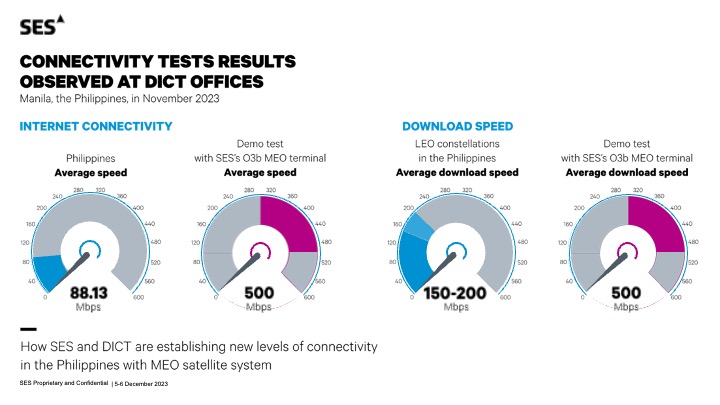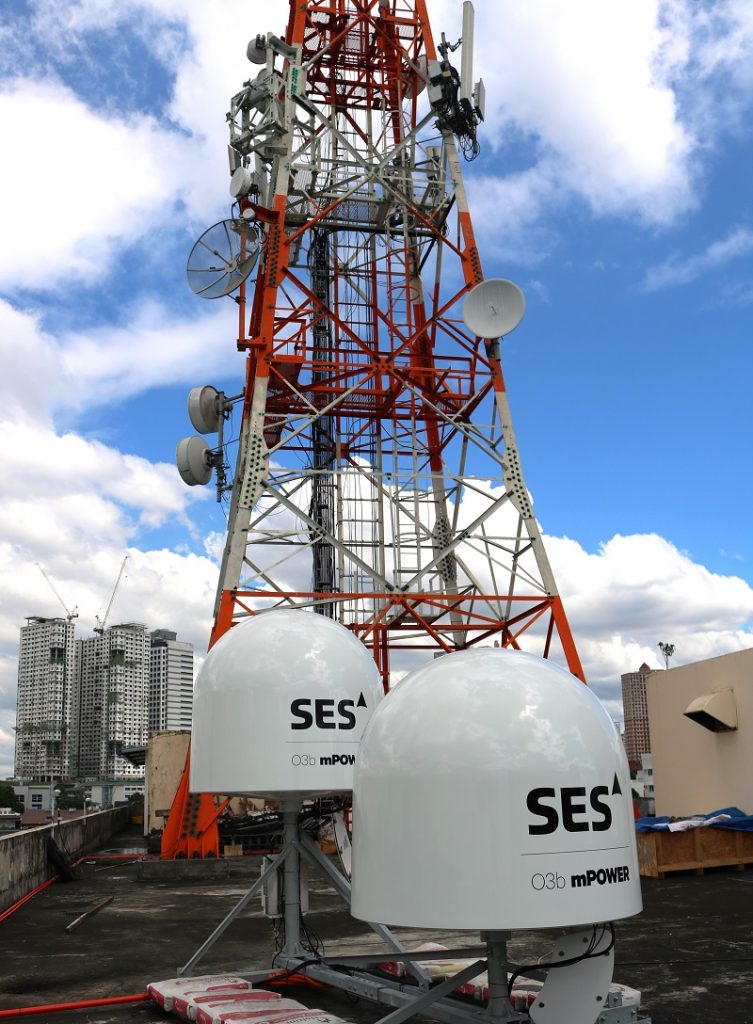Satellite telecommunications provider SES held a virtual media briefing last Dec. 13 to unveil the results of its proof-of-concept tests for the Department of Information and Communications Technology (DICT).
The results showed that SES’ Medium Earth Orbit (MEO) satellites can provide the country’s remote areas with high download speed, competitive upload speed, and relatively low latency.
Rob Marabut, sales director of enterprise and cloud at SES Asia, said: “Our intention is that by Q2 2024, hopefully we can have the DICT consider our MEO technology for the national digital inclusion programs that they will be deploying next year.”
Satellite Internet like SES’s offering is being explored by DICT for their Free Public Internet Access or Free Wi-Fi For All (FWFA) program that aims to provide free and reliable Internet in all public areas across the country.
It is a particularly viable alternative in the isolated communities where it is challenging to provide broadband Internet via fiber-optic cable.
Jeffrey Ian Dy, DICT undersecretary for connectivity, cybersecurity, and upskilling, emphasized that the DICT is open to various technologies for the FWFA program.
“We must utilize different technologies in order to optimize the connectivity established in the various beneficiary sites,” Dy stated during the briefing.
SES’s latest test showed that its MEO satellite constellations can meet the Internet requirements of Filipinos in remote areas.
During the test, SES’s O3b — the only active MEO satellite constellation available commercially worldwide — exhibited speeds of 500Mbps download and 80Mbps upload.

According to Ookla’s Speedtest Global Index, this download speed is roughly six times faster than the Philippines’ median fixed broadband download speed of 83.09 Mbps while the upload speed is comparable to the country’s median upload speed of 79.42 Mbps as of September 2023.
Since the test only used SES’ small terminal, SES reported that the speed can even be boosted to up to 1Gbps download or 500Mbps upload if its larger terminals are used.
SES also recorded an average latency or time delay of 133 Mbps, which is only around one-fourth of the latency recorded by traditional GEO satellites already being used by the DICT.
SES indicated that this level of latency can still support high bandwidth activities such as streaming, video gaming, video conferencing or services that require minimal delay such as enterprise resource planning software and stock trading updates.
Besides MEO satellites, however, there are other types of satellite technology already available in the Philippines, one of which is Low Earth Orbit (LEO) satellites.
LEO satellites generally have better latency levels than MEO satellites, but LEO constellations require more satellites to deliver stable Internet connectivity, need more gateways, and have a lower throughput compared to MEO constellations.

Starlink, another satellite Internet provider that utilizes LEO satellites, has already been awarded contracts by the DICT as part of the FWFA program and have helped set up free Internet sites in the country.
SES addressed this competition directly by maintaining that a wider choice of satellite technology will help the DICT fully implement its programs across the country’s archipelagic terrain.
“Because the DICT is building an ecosystem, we believe each [type of satellite] has a particular use. At the end of the day, all of this is beneficial for the Philippine people. For me, the advantage that SES MEO capacity brings is the high throughput,” Marabut said.
“I mentioned that we can deliver capacity of more than one gig to any particular site, that is unmatched by any LEO provider today,” he asserted.




